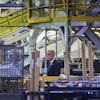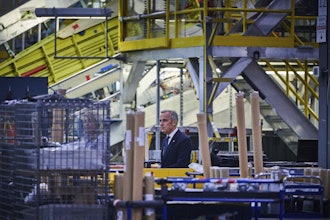The announcement Thursday that British police had thwarted a suspected bombing plot in which several aircraft would be blown up midway between the U.S. and Britain brought back horrible memories of almost five years ago.
While authorities appear to have caught the terrorists before they could wreak their havoc on innocent civilians, today’s events serve as another wake up call that the world has changed dramatically in recent years. For manufacturers, the landscape has been altered no less dramatically.
Following September 11, companies were forced to take a closer look at their operations; supply chain security became increasingly important, with greater resources being devoted to that side of the business every day.
Holly Allison, VP of Marketing at TradeStone Software, which specializes in global trade, points out that supply chain resiliency is extremely important in ensuring that operations continue smoothly, regardless of external factors. According to Allison, the two variables of the supply chain that companies have control over are the supply base - in terms of who it is and where it is - and the mode of transportation used to ship inventory. Keeping control over those variables helps keep inventory moving.
For supply bases in times of unrest, some companies move away from public auctions and towards well-known entities, or those that they have used in the past. Choosing alternate routes for shipping is another option. Although it can be costly, creating redundant knowledge and data and buffer inventories can also cut down on disruptions in the supply chain.
According to a recent study conducted by Stanford University on supply chain security, more than 17,000 containers come through U.S. seaports every day, making physical inspection of each container next to impossible. In the wake of Sept. 11, the U.S. government took several initiatives to minimize the risk in the transportation of goods including the Advanced Manifest Rule, which requires detailed cargo data for all modes to be submitted to U.S. CPB prior to arrival.
Likewise, the Container Security Initiative has the U.S. and more than 25 trading partners pursuing supply chain security by pushing inspections and screening upstream to originating ports.
Much of that has to do with the flexibility of both companies and consumers since the September 11 attacks. Companies have learned to combine design and development ideas with supply chain concerns. Indeed, most companies ship pieces rather than the final product, as it is easier to make adjustments should something go wrong.
In the wake of Sept. 11, Allison noted that Ford Motor charterd flights from Canada to the United States. Carrying Canadian parts, the flights cost Ford an average of $450, 000 each.
That was part of Ford’s Just-in-Time supply chain philosophy which, while offering plenty of benefits to manufacturers, comes with a major flaw: it leaves the supplier and downstream consumers open to supply shocks.
“If the U.S. were to stockpile an extra five percent inventory in order to buffer itself from future strikes, hurricanes or terrorism, it would represent extra working capital of over $75 billion,” Allison said.
She said the U.S. can handle a 10-14 day disruption in its supply chain before running out of items such as toilet paper, batteries, and food.


















